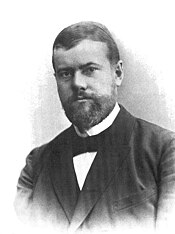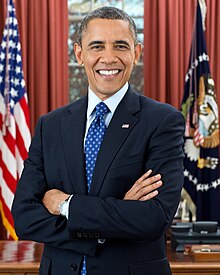John Locke: consent of the governed confers political legitimacy.
In political science, legitimacy is the right and acceptance of an authority, usually a governing law or a régime. Whereas "authority" denotes a specific position in an established government, the term "legitimacy" denotes a system of government—wherein "government" denotes "sphere of influence". An authority viewed as legitimate often has the right and justification to exercise power.
Political legitimacy is considered a basic condition for governing,
without which a government will suffer legislative deadlock(s) and
collapse. In political systems where this is not the case, unpopular
régimes survive because they are considered legitimate by a small,
influential élite. In Chinese political philosophy, since the historical period of the Zhou Dynasty (1046–256 BC), the political legitimacy of a ruler and government was derived from the Mandate of Heaven, and unjust rulers who lost said mandate therefore lost the right to rule the people.
In moral philosophy, the term "legitimacy" is often positively interpreted as the normative
status conferred by a governed people upon their governors'
institutions, offices, and actions, based upon the belief that their
government's actions are appropriate uses of power by a legally
constituted government.
The Enlightenment-era British social philosopher John Locke (1632–1704) said that political legitimacy derives from popular explicit and implicit consent of the governed: "The argument of the [Second] Treatise is that the government is not legitimate unless it is carried on with the consent of the governed." The German political philosopher Dolf Sternberger
said that "[l]egitimacy is the foundation of such governmental power as
is exercised, both with a consciousness on the government's part that
it has a right to govern, and with some recognition by the governed of
that right". The American political sociologist Seymour Martin Lipset
said that legitimacy also "involves the capacity of a political system
to engender and maintain the belief that existing political institutions
are the most appropriate and proper ones for the society". The American political scientist Robert A. Dahl
explained legitimacy as a reservoir: so long as the water is at a given
level, political stability is maintained, if it falls below the
required level, political legitimacy is endangered.
Types
Legitimacy is "a value whereby something or someone is recognized and accepted as right and proper".
In political science, legitimacy usually is understood as the popular
acceptance and recognition by the public of the authority of a governing
régime, whereby authority has political power through consent and
mutual understandings, not coercion. The three types of political
legitimacy described by German sociologist Max Weber are traditional, charismatic, and rational-legal:
- Traditional legitimacy derives from societal custom and habit that emphasize the history of the authority of tradition. Traditionalists understand this form of rule as historically accepted, hence its continuity, because it is the way society has always been. Therefore, the institutions of traditional government usually are historically continuous, as in monarchy and tribalism.
- Charismatic legitimacy derives from the ideas and personal charisma of the leader, a person whose authoritative persona charms and psychologically dominates the people of the society to agreement with the government's régime and rule. A charismatic government usually features weak political and administrative institutions, because they derive authority from the persona of the leader, and usually disappear without the leader in power. However, if the charismatic leader has a successor, a government derived from charismatic legitimacy might continue.
- Rational-legal legitimacy derives from a system of institutional procedure, wherein government institutions establish and enforce law and order in the public interest. Therefore, it is through public trust that the government will abide the law that confers rational-legal legitimacy.
Forms
Theocracy: Egyptian divine authority, Horus as a falcon.
Numinous legitimacy
In a theocracy, government legitimacy derives from the spiritual authority of a god or a goddess.
- In ancient Egypt (c. 3150 BC), the legitimacy of the dominion of a Pharaoh (god–king) was theologically established by doctrine that posited the pharaoh as the Egyptian patron god Horus, son of Osiris.
Theocracy: The coat of arms of the Holy See, the seat of Papal government.
- In the Roman Catholic Church, the priesthood derives its legitimacy from a divine source; the Roman Magisterium dogmatically teaches that Jesus Christ designated St. Peter the supreme and infallible head of the entire Christian Church, and thus each bishop of Rome is sanctified, legitimate, and possesses these charisms as well.
Civil legitimacy
One measurement of civil legitimacy is who has access to the vote, including women are able to vote.
The political legitimacy of a civil government derives from agreement
among the autonomous constituent institutions—legislative, judicial,
executive—combined for the national common good. One way civil society
grants legitimacy to governments is through public elections. There are
also those who refute the legitimacy offered by public elections,
pointing out that the amount of legitimacy public elections can grant
depends significantly on the electoral system conducting the elections.
In the United States this issue has surfaced around how voting is
impacted by gerrymandering and the repeal of part of the Voting Rights Act in 2013.
Another challenge to the political legitimacy offered by elections is
whether or not marginalized groups such as women or those who are
incarcerated are allowed to vote.
Civil legitimacy can be granted through different measures for accountability than voting, such as financial transparency
and stake-holder accountability. In the international system another
method for measuring civil legitimacy is through accountability to
international human rights norms.
In an effort determine what makes a government legitimate the
Center for Public Impact launched a project to hold a global
conversation about legitimacy stating, inviting citizens, academics and
governments to participate.
The organization also publishes case studies that consider the theme of
legitimacy as it applies to projects in a number of different countries
including Bristol, Lebanon and Canada.
"Good" governance vs. "bad" governance
The
United Nations Human Rights Office of the High Commission (OHCHR)
established standards of what is considered "good governance" that
include the key attributes transparency, responsibility, accountability,
participation and responsiveness (to the needs of the people).
Input, output and throughput legitimacy
Assessing
the political legitimacy of a government can be done by looking at
three different aspects of which a government can derive legitimacy. Fritz Scharpf
introduced two normative criteria, which are output legitimacy, i.e.
the effectiveness of policy outcomes for people and input legitimacy,
the responsiveness to citizen concerns as a result of participation by
the people. A third normative criterion was added by Vivien Schmidt,
who analyzes legitimacy also in terms of what she calls throughput,
i.e. the governance processes that happen in between input and output.
Negative and positive legitimacy
Abulof distinguishes between negative political legitimacy (NPL), which is about the object of legitimation (answering what is legitimate), and positive political legitimacy (PPL), which is about the source of legitimation (answering who is the 'legitimator').
NPL is concerned with establishing where to draw the line between good
and bad, PPL with who should be drawing it in the first place. From the
NPL perspective, political legitimacy emanates from appropriate actions;
from a PPL perspective, it emanates from appropriate actors. In the
social contract tradition, Hobbes and Locke focused on NPL (stressing
security and liberty, respectively), while Rousseau focused more on PPL
("the people" as the legitimator). Arguably, political stability depends
on both forms of legitimacy.
Instrumental and substantive legitimacy
Weber's understanding of legitimacy rests on shared values,
such as tradition and rational-legality. But policies that aim at
(re-)constructing legitimacy by improving the service delivery or
'output' of a state often only respond to shared needs. Therefore, substantive sources of legitimacy need to be distinguished from more instrumental ones. Instrumental legitimacy
rests on "the rational assessment of the usefulness of an authority
..., describing to what extent an authority responds to shared needs.
Instrumental legitimacy is very much based on the perceived
effectiveness of service delivery. Conversely, substantive legitimacy
is a more abstract normative judgment, which is underpinned by shared
values. If a person believes that an entity has the right to exercise
social control, he or she may also accept personal disadvantages."
Sources
Max Weber: societies are politically cyclical.
Max Weber proposed that societies behave cyclically in governing
themselves with different types of governmental legitimacy. That democracy
was unnecessary for establishing legitimacy, a condition that can be
established with codified laws, customs, and cultural principles, not by
means of popular suffrage.
That a society might decide to revert from the legitimate government of
a rational–legal authority to the charismatic government of a leader;
e.g., the Nazi Germany of Adolf Hitler, Fascist Italy under Benito Mussolini, and Francoist Spain under General Francisco Franco.
The French political scientist Mattei Dogan's
contemporary interpretation of Weber's types of political legitimacy
(traditional, charismatic, legal-rational) proposes that they are
conceptually insufficient to comprehend the complex relationships that
constitute a legitimate political system in the twenty-first century.
Moreover, Dogan proposed that traditional authority and charismatic
authority are obsolete as forms of contemporary government (e.g., the
Islamic Republic of Iran (est. 1979) rule by means of the priestly
Koranic interpretations by the Ayatollah Khomeini). That traditional authority has disappeared in the Middle East; that the rule-proving exceptions are Islamic Iran and Saudi Arabia.
Furthermore, the third Weber type of political legitimacy,
rational-legal authority, exists in so many permutations no longer allow
it to be limited as a type of legitimate authority.
Forms of legitimate government
In determining the political legitimacy of a system of rule and government, the term proper—political legitimacy—is philosophically an essentially contested concept that facilitates understanding the different applications and interpretations of abstract, qualitative, and evaluative concepts such as "art", "social justice", et cetera, as applied in aesthetics, political philosophy, the philosophy of history, and the philosophy of religion.
Therefore, in defining the political legitimacy of a system of
government and rule, the term "essentially contested concept" indicates
that a key term (communism, democracy, constitutionalism, etc.) has different meanings within a given political argument. Hence, the intellectually restrictive politics of dogmatism ("My answer is right, and all others are wrong"), scepticism ("All answers are equally true or [false]; everyone has a right to his own truth"), and eclecticism
("Each meaning gives a partial view, so the more meanings the better")
are inappropriate philosophic stances for managing a political term that
has more than one meaning.
Establishing what qualifies as a legitimate form of government
continues to be a topic of great philosophical controversy. Forms of
legitimate government are posited to include:
- Communism: The legitimacy of a Communist state derives from having won a civil war, a revolution, or from having won an election, such as the Presidency of Salvador Allende (1970–73) in Chile; thus, the actions of the Communist government are legitimate, authorised by the people. In the early twentieth century, Communist parties based the arguments supporting the legitimacy of their rule and government upon the scientific nature of Marxism.
- Constitutionalism: The modern political concept of constitutionalism establishes the law as supreme over the private will, by integrating nationalism, democracy, and limited government. The political legitimacy of constitutionalism derives from popular belief and acceptance that the actions of the government are legitimate because they abide by the law codified in the political constitution. The political scientist Carl Joachim Friedrich (1901–84) said that, in dividing political power among the organs of government, constitutional law effectively restrains the actions of the government.
- Democracy: In a democracy, government legitimacy derives from the popular perception that the elected government abides by democratic principles in governing, and thus is legally accountable to its people.
- Fascism: In the 1920s and the 1930s, fascism based its political legitimacy upon the arguments of traditional authority; respectively, the German National Socialists and the Italian Fascists claimed that the political legitimacy of their right to rule derived from philosophically denying the (popular) political legitimacy of elected liberal democratic governments. During the Weimar Republic (1918–33), the political philosopher Carl Schmitt (1888–1985)—whose legal work as the "Crown Jurist of the Third Reich" promoted fascism and deconstructed liberal democracy—addressed the matter in Legalität und Legitimität (Legality and Legitimacy, 1932), an anti-democratic polemic treatise that asked: How can parliamentary government make for law and legality, when a 49 per cent minority accepts as politically legitimate the political will of a 51 per cent majority?
- Monarchy: In a monarchy, the divine right of kings establishes the political legitimacy of the rule of the monarch (king or queen); legitimacy also derives from the popular perception (tradition and custom) and acceptance of the monarch as the rightful ruler of nation and country. Contemporarily, such divine-right legitimacy is manifest in the absolute monarchy of the House of Saud (est. 1744), a royal family who have ruled and governed Saudi Arabia since the 18th century. Moreover, constitutional monarchy is a variant form of monarchic political legitimacy which combines traditional authority and legal–rational authority, by which means the monarch maintains nationalist unity (one people) and democratic administration (a political constitution).













